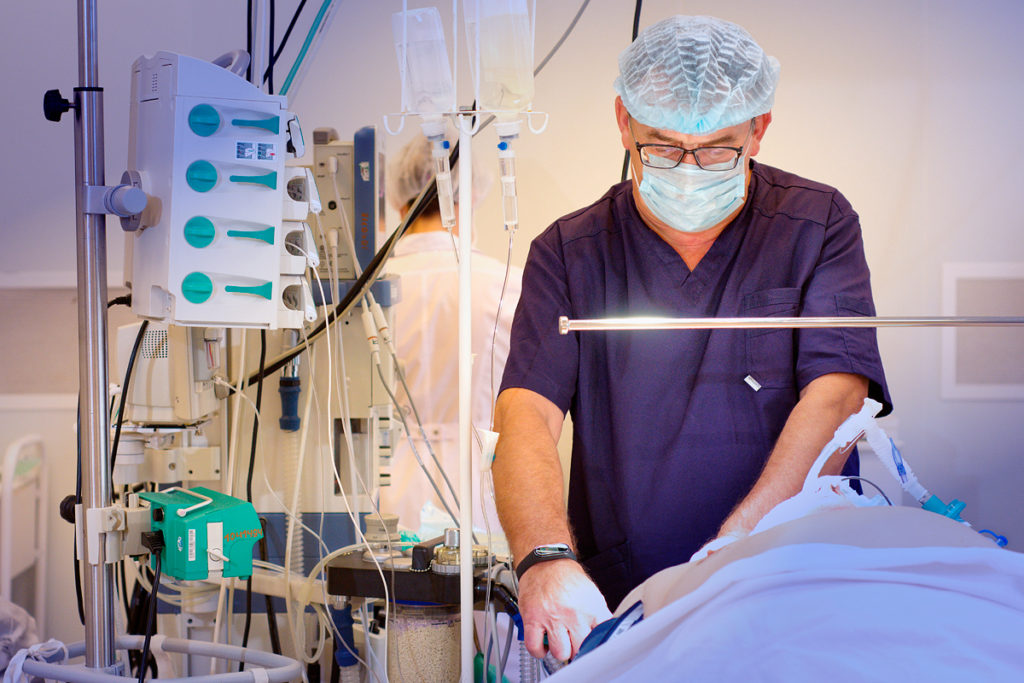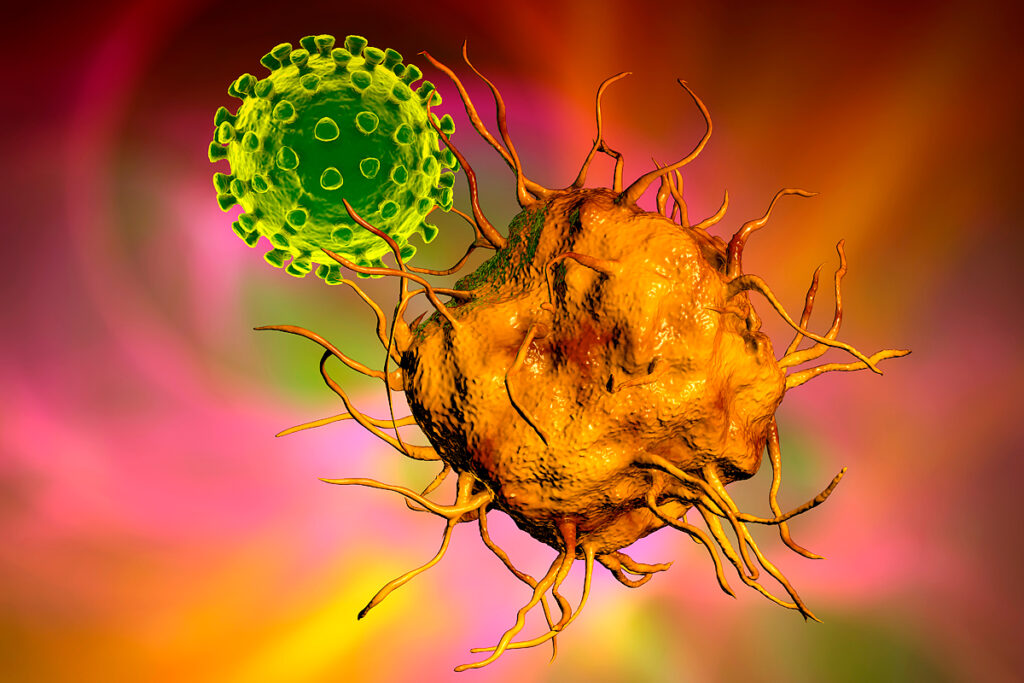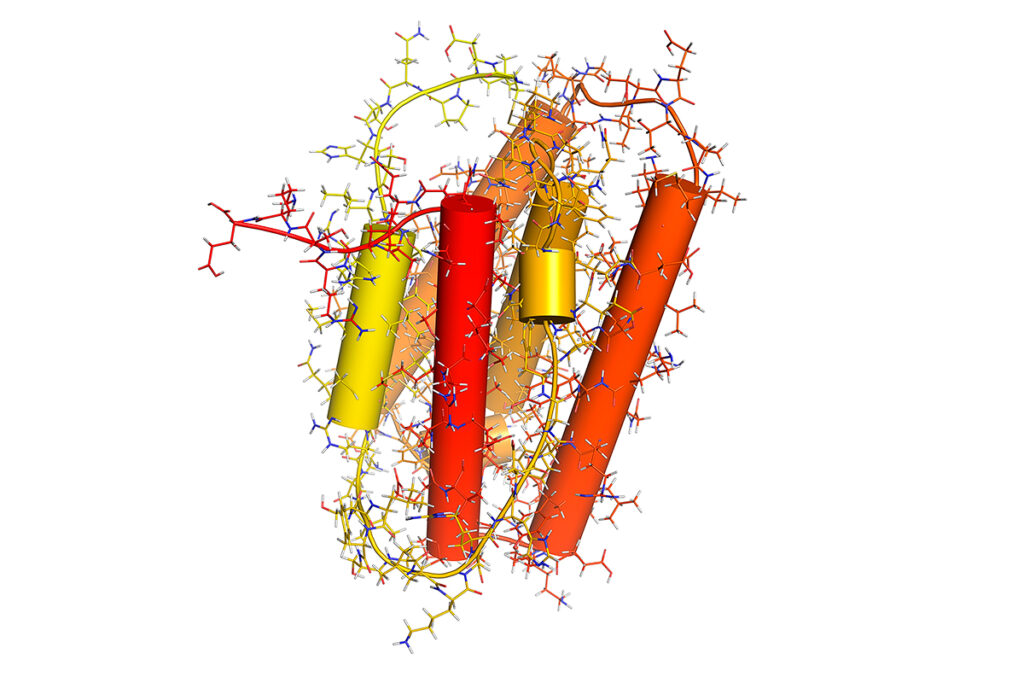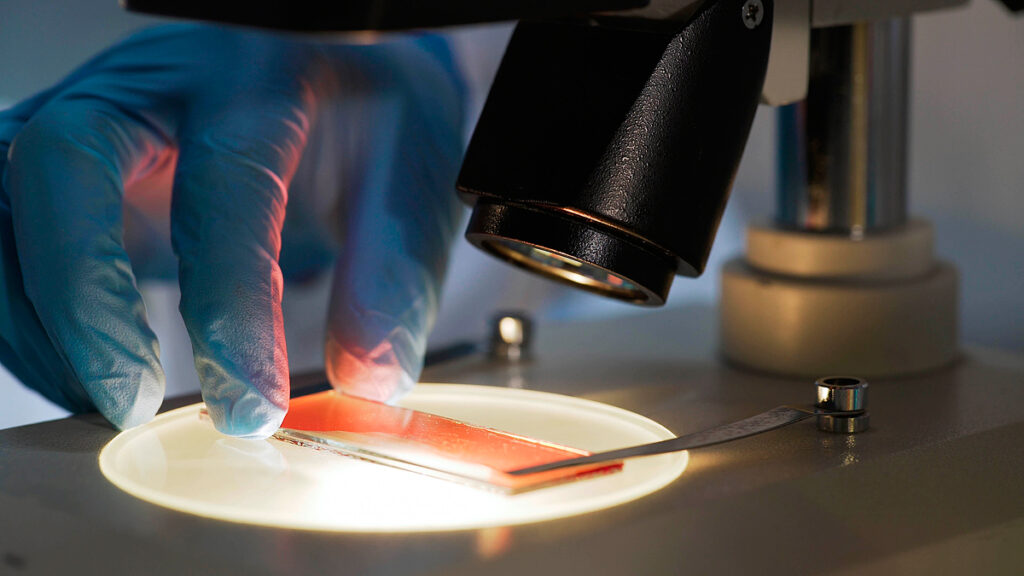SARS-CoV-2 is a human coronavirus that causes COVID-19 disease. It initially appeared in China in December 2019 and quickly spread to many countries. Until April 3, 2020, SARS-CoV-2 has infected more than a million people and killed more than 55,000. Antiviral drugs are being studied around the world to contain the epidemic. Among them is Type I interferon.
Type I interferons (IFN-I) are a group of informational cytokine molecules that include the subtypes α, β, ω, κ and ε. All subtypes are also divided into several isoforms.
IFN-I plays an important role in antiviral immunity. Pattern recognition receptors (PRRs) are located on the surface of cells in the immune system. PRRs recognize viral components making immune system cells (dendritic cells, etc.) secrete the IFN-I. Type I interferons are among the first cytokines produced when a viral infection enters the body. IFN-I prevents virus replication using several mechanisms:
- slowing down cellular metabolism and protein synthesis lowering;
- isolation of cytokines that contribute to the activation of adaptive immunity.
Type I interferons for COVID-19 treatment
SARS-CoV is a severe acute respiratory syndrome, also known as atypical pneumonia. The first case was in China, 2002. The symptoms were viral pneumonia, distress syndrome, respiratory failure.
MERS-CoV – a Middle East respiratory syndrome. The first case was in Saudi Arabia, 2012. The symptoms are viral pneumonia and kidney failure.
MERS-CoV and SARS-CoV are coronaviruses that have similar properties to SARS-CoV-2, despite the differences in their epidemiology, pathology, and protein composition.
The IFN-I treatment has been studied for MERS-CoV and SARS-CoV in numerous experiments (both in vitro and in vivo) including combination with lopinavir/ritonavir, ribavirin, remdesivir, corticosteroids, and IFNγ (type II interferon – an immunomodulator).
A study on primates in 2015 showed that Ifnß was effective against MERS-CoV in vitro.
But a systematic review type I interferons use for the SARS-CoV treatment has demonstrated that the use of IFN-I, generally, did not significantly improve the course of the disease in humans. For example, the combination of IFNß with lopinavir/ritonavir against SARS-CoV improved lung function but did not significantly reduce viral replication or lung disease severity. At the same time, the combination of IFNα2a with ribavirin has slowed mortality without reducing it in the long term. Similarly, the combination of IFNα2b with ribavirin has shown excellent results in rhesus macaques but was ineffective in humans.
The lack of significant improvement in IFN-I treatment may be explained as:
- Mers-CoV and SARS-CoV viruses block the IFN action and synthesis.
- The number of patients and animals used in the studies was limited.
- It is difficult to determine whether the improvement was caused by IFN-I or by drugs used in combined therapy.
- Research results are often significantly different due to inconsistencies in experimental and clinical settings.
- There is an assumption that interferon is effective in patients only if they do not have concomitant diseases.
- IFN-I has many subtypes and isoforms.
Effectiveness of IFNß1 in the early administration
Ifnß is more effective against SARS-CoV and MERS-CoV coronaviruses than IFNα. This fact may be related to the protective activity of Ifnß1 in the lung. Ifnß1 regulates the cluster of differentiation 73 (CD73) in pulmonary endothelial cells, which leads to the release of anti-inflammatory adenosine and the maintenance of endothelial barrier function. This process explains why ifnß1a treatment reduces capillary leakage in acute respiratory distress syndrome.
However, this effect is not sufficient to reduce mortality from coronaviruses. In vivo studies in mice have shown that the timing of IFN-I administration is crucial: positive effects were observed if IFN-I was administered shortly after an infection, but IFN-I did not inhibit virus replication and had side effects if administered later.
A 2015 study on marmosets found that Ifnß1b was as effective against MERS-CoV as a combination with lopinavir/ritonavir.
A combination of Ifnß1b and lopinavir/ritonavir, administered intravenously, is currently being investigated in Saudi Arabia for the MERS-CoV treatment. This is currently the only clinical trial against MERS-CoV.
IFN1 against SARS-CoV2
The knowledge gained from the research on IFN-I for the treatment of SARS-CoV and MERS-CoV is used in the selection of potential treatments for SARS-CoV-2.
SARS-CoV and MERS-CoV can disrupt the interferon signaling pathway.
SARS-CoV2 is significantly more sensitive to IFN-I than SARS-CoV. Therefore, SARS-CoV2 treatment with type I interferon can be similarly effective. In support of this hypothesis, IFNα2b sprays can reduce the incidence of SARS-CoV-2. This study demonstrates that IFN-I can be used to prevent SARS-CoV-2, while replication of MERS-CoV and SARS-CoV is indifferent to interferon prevention.
Efficacy and safety of IFN-I for the treatment of SARS-CoV-2
IFN-I can be a safe and effective treatment for SARS-CoV-2. This is evidenced by the research on the use of IFN-I for MERS-CoV and SARS-CoV treatment.
A 2019 study shows that IFNß is the most relevant subtype of interferon and that IFN-I should be administered as early as possible to optimize antiviral therapy and avoid adverse events.
COVID-19 pathology, mainly consisting of lung lesions, has similar characteristics to interferonopathies. interferonopathy is a hereditary disease which based on a violation of the signaling interferon pathways.
Early clinical data has shown that inflammatory biomarkers are associated with increased mortality. It is suggested that SARS-CoV-2 induce an excessive IFN-I mediated antiviral response that leads to tissue damage. If this assumption is correct, then IFN-I treatment should be limited to the early phases of infection. It is even possible to later use of anti-interferon drugs to alleviate the pathology.
Chinese recommendations for COVID-19 treatment
In China, it is recommended to inject patients with 5 million IU of IFNa by vapor inhalation twice a day in combination with ribavirin.
Recently, clinical trials have been registered to evaluate the combination of lopinavir/ritonavir and IFNα2b and the combination of lopinavir/ritonavir with ribavirin and IFNß1b administered subcutaneously.
The introduction of IFN-I by vapor inhalation purposefully affects the respiratory tract. However, the pharmacodynamics and pharmacokinetics of this administration method have never been evaluated. On the contrary, intravenous and subcutaneous methods of administration are well described and have already proven their safety in several clinical trials.
The combination of IFN-I with lopinavir/ritonavir, ribavirin, or remdesivir may increase its effectiveness since the effectiveness of such combinations is observed in vitro against other coronaviruses.
It may also be appropriate to evaluate IFN-III for the COVID-19 treatment due to its protective effect on the respiratory tract.
Conclusions
Ifnß1 may be a safe and effective treatment for COVID-19 in the early stages of infection.
Similar treatments have had mixed effectiveness against MERS-CoV and SARS-CoV viruses, but in vitro studies have shown that SARS-CoV-2 may be significantly more sensitive to IFN-I than other coronaviruses.
There is currently no animal model of COVID-19. But this should not prevent the clinical evaluation of IFN-I treatment since its safety has already been evaluated in numerous independent clinical trials.



